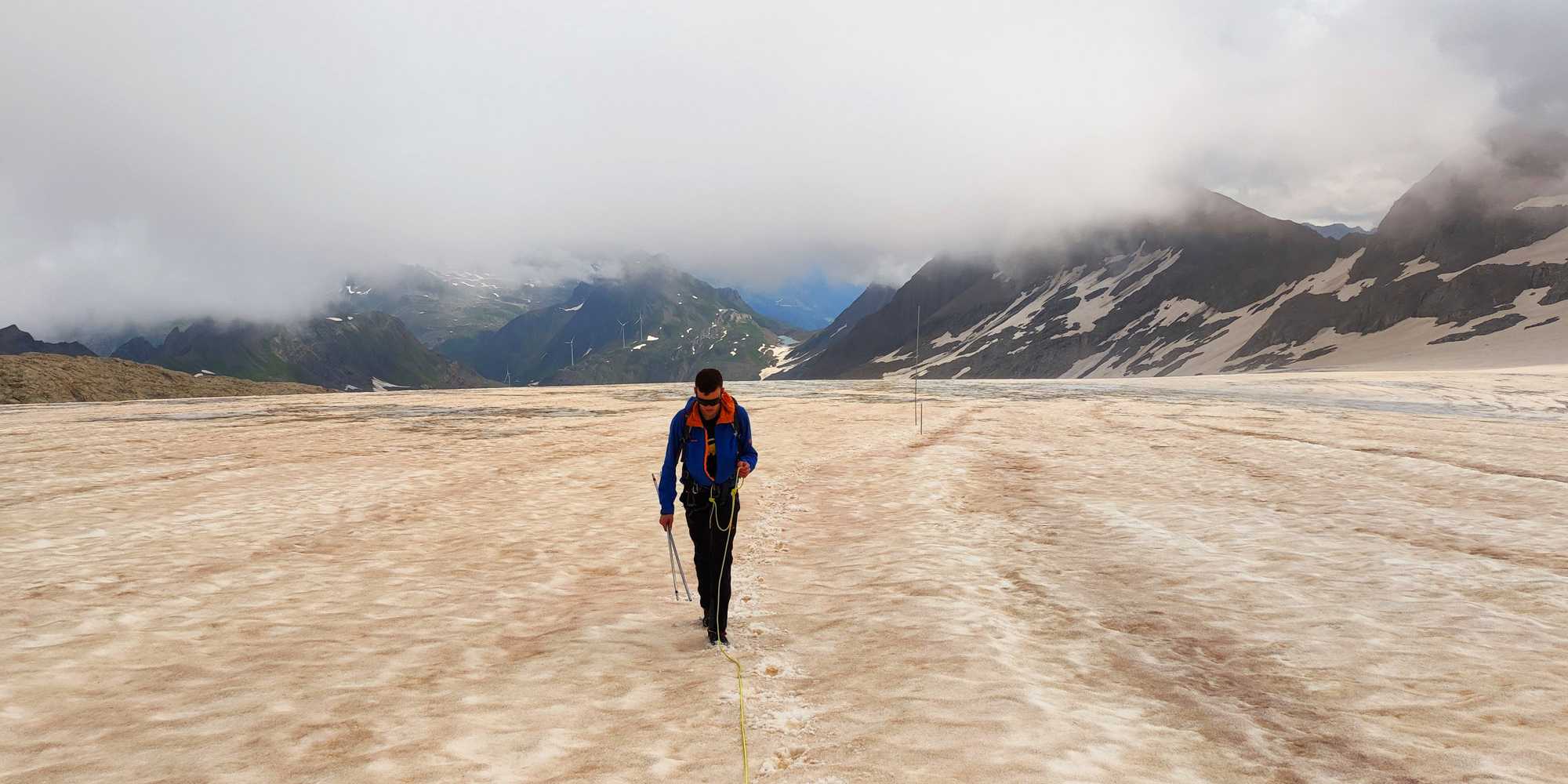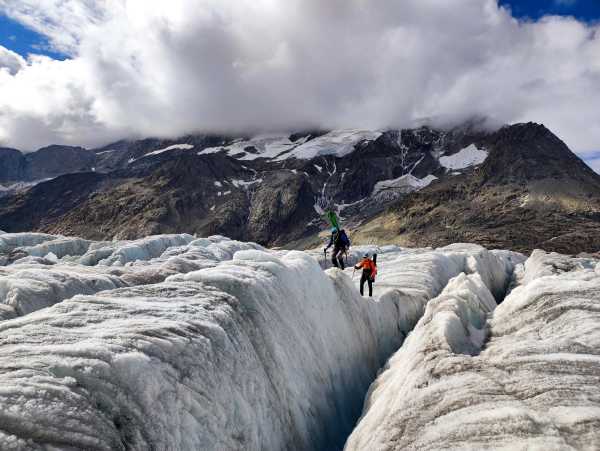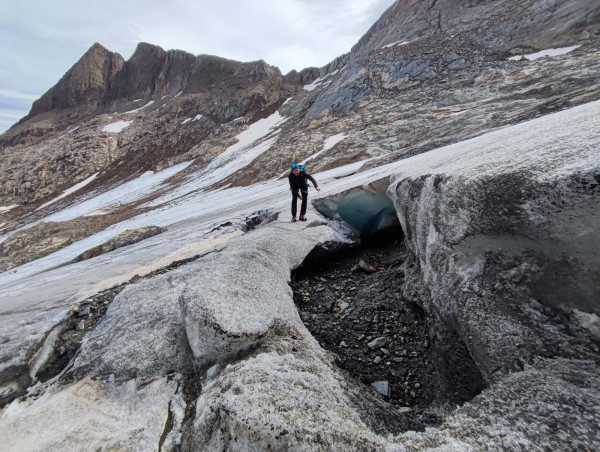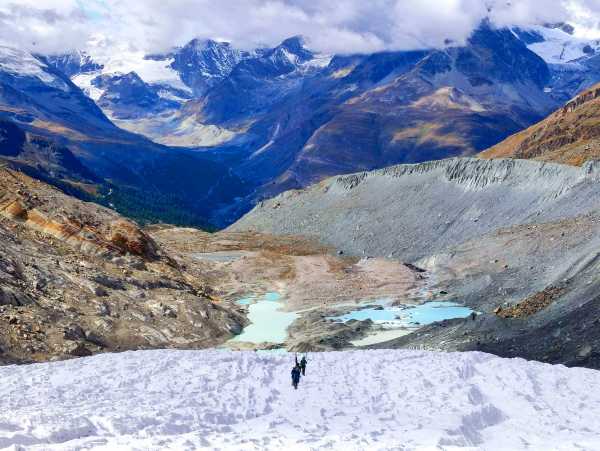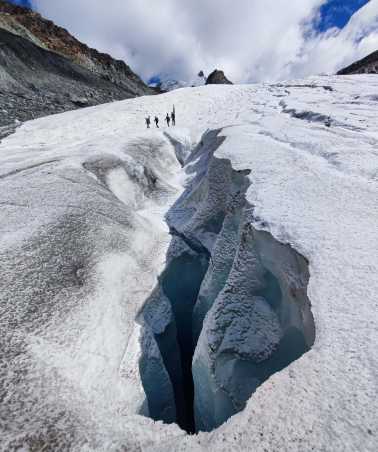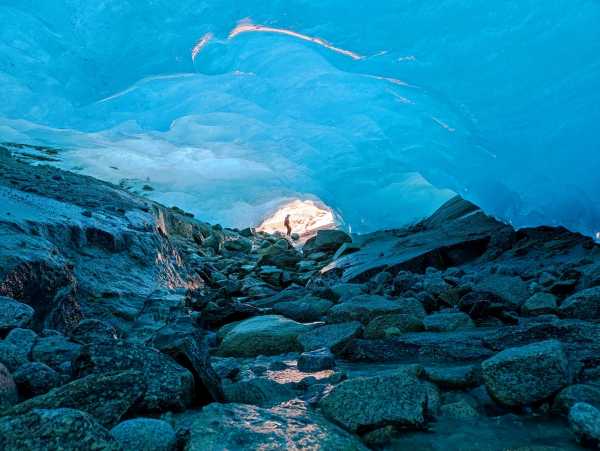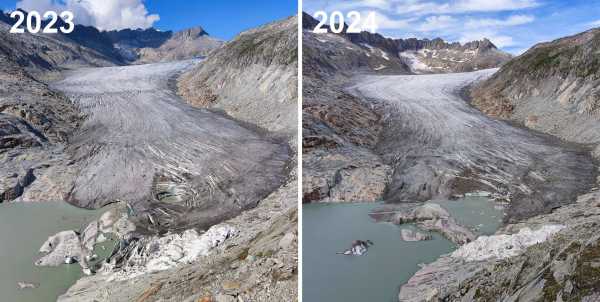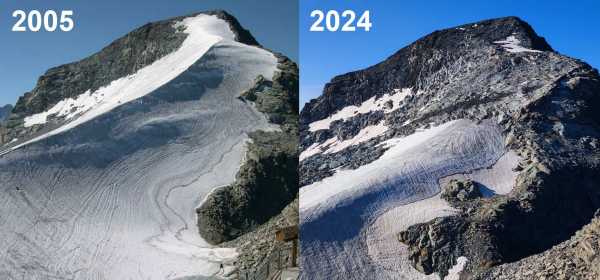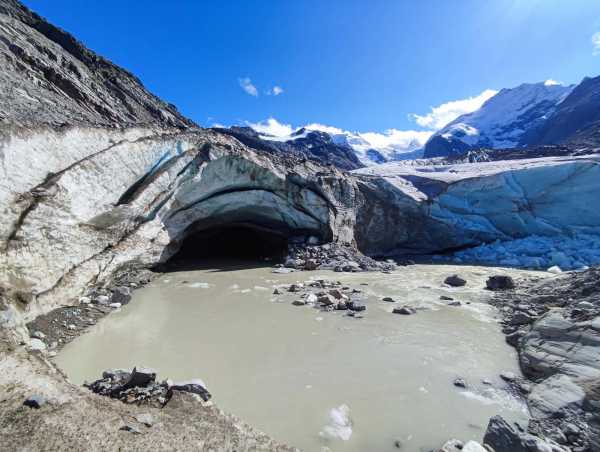When it comes to glaciers, the year 2024 was notable for marked contrasts. Swiss glaciers enjoyed extremely favourable conditions up to and into June, thanks to 30% more winter snow than the average and an early summer marked by rainfall. However, the dust from the Sahara – which covered the surface of the snow – accelerated the melting process, and August saw the greatest loss of ice recorded since measurements began. Overall, the glaciers also experienced melting of a striking degree in 2024, as illustrated by data recorded by the Glacier Monitoring in Switzerland (GLAMOS) network.
The retreat of the glacier tongues and their disintegration continue unabated as a result of climate change. The previous years of 2022 and 2023 saw a total of 10% of Swiss glacier volume disappearing, more than had ever been recorded before. The loss of around 2.5% recorded this year is also higher than the mean value of the last decade. Major winter snow volumes managed to slow the loss of ice, but could not stop it. For example, 6 metres of snow could still be measured in mid-May on the Claridenfirn in the Glarus Alps, but this had disappeared completely in September. On the other hand, glaciers at levels below 3,000 metres above the sea melted completely, exhibiting losses of up to 2 metres of their average ice thickness (e.g. the Giétro Glacier in Valais, the Plaine Morte Glacier in the canton of Bern and the Silvretta Glacier in Graubünden). The loss experienced in glaciers with a southern influence was somewhat less, thanks to an abundance of snow in winter (e.g. the Basòdino Glacier in the canton of Ticino).
Almost unprecedented snow depth at high altitudes
The winter of 2023/2024 was distinguished by a contrast between mountains and valleys on both sides of the Alps. Below 1,400 metres above the sea, snow depths were clearly below average and, conversely, strikingly above average at altitudes over 2,200 metres above the sea. Heavy precipitation levels and relatively high temperatures throughout the entire six months of winter were responsible for this. Mean snow depths between November and May were among the highest since measurements began (e.g. ranking 6th in the almost 90 years of measurements on the Weissfluhjoch in Graubünden).
The volumes of snow created disappeared quickly, on account of very high temperatures recorded in July and August. August on the Jungfraujoch was even warmer than in the sweltering summers of 2003 and 2022. The depositing of dust from the Sahara during the six months of winter also accelerated snow melt, as the snow absorbed more solar energy as a result of this layer. In addition, very little fresh snow fell between mid-June and mid-September, even at 3,000 metres above the sea. This is exceptional in a long-term comparison, but has occurred ever more frequently in recent years.
